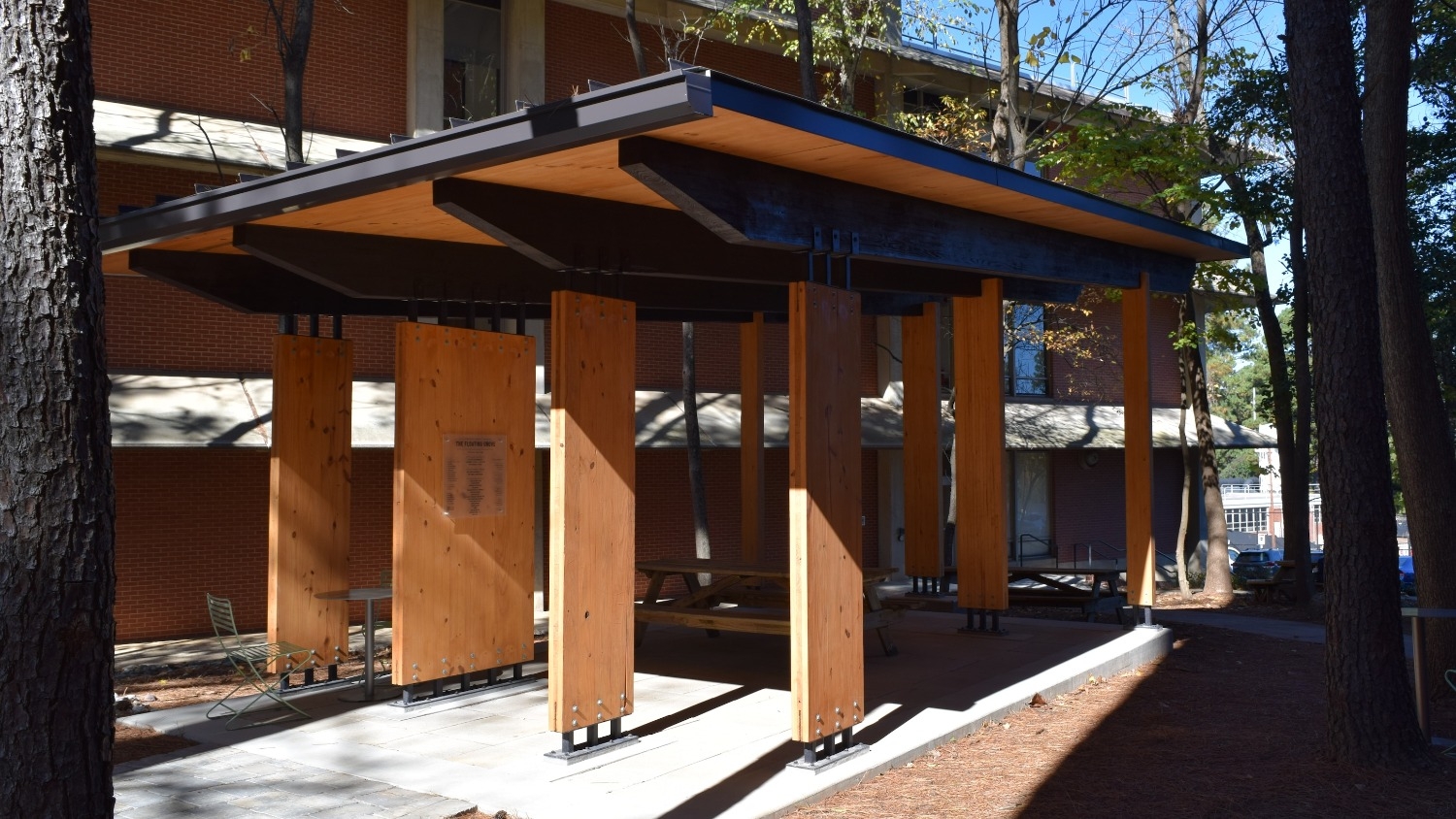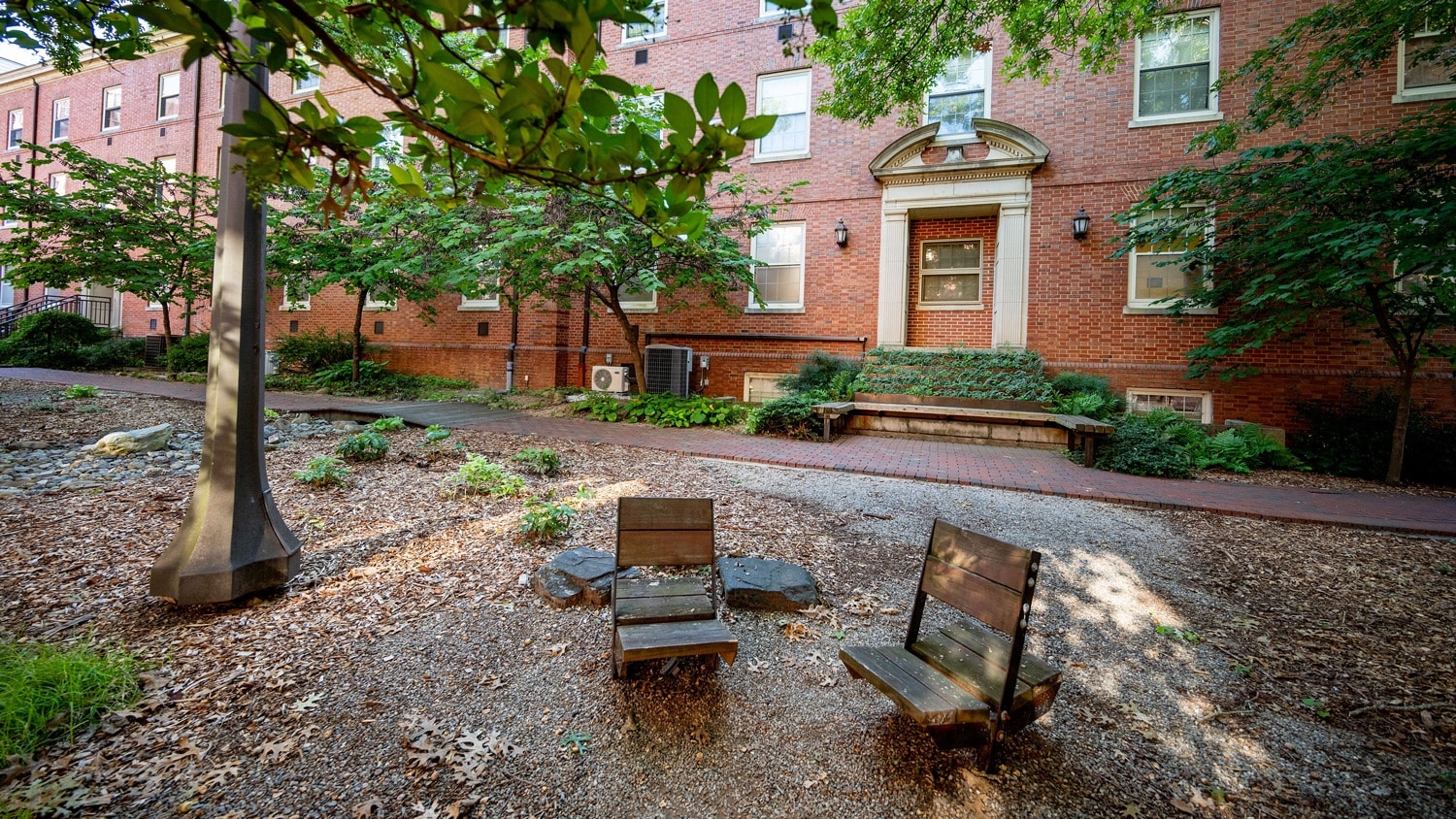Storytelling with Historical Influence
It is easy to immediately like him. He is soft spoken and always with an engaging smile and friendly demeanor. I find him very interesting. I am referring to Abraham Shaun Kurian, a master’s student working toward a degree in Art + Design with a concentration in Animation.
Kurian came to the College of Design following a successful career in commercial advertising and television for more than a decade. He received his Bachelor of Arts in Cognitive Psychology and Communication Studies from the University of North Carolina at Chapel Hill in 2002. His current academic interests are in storytelling, user experience research, user interface design, and tangible surface computing.
He is a creative. “I’ve been working in motion graphics and film. However, I wanted to explore design. I looked at other programs around the country but I loved the College of Design and the interdisciplinary approach.”
Kurian is originally from India and moved to the United States in 1993. “This (U.S) is a great country with so much opportunity. And I love American history. My final project will incorporate history from the civil rights era in a proof of concept perspective that is poetic in nature.” Kurian is interested in human rights and the works of James Baldwin—an African-American novelist, essayist, playwright, poet, and spokesman for the Civil Rights Movement.
“I am going to construct a dramatic reenactment of what his (Baldwin’s) writings are about. The project is a digital humanities experience with Baldwin’s words as the narrative voice inside a virtual reality space. It’s not just about a particular community or about the civil rights era, but about the shared perspective that makes us all human—that oppression of any kind is a universal human rights issue.” This project is an experimental concept with a collaboration of visual and narrative elements that tell a story in which users can explore and learn from.
Some of Kurian’s early project concepts incorporated AR (augmented reality) and transitioned to VR (virtual reality). One such situation involved storytelling in which physical locations would have geo-targeted areas, like a scavenger hunt. Users would have to gather clues on a map and discover through the experience where to go next. Kurian decided on VR in telling the story, which revisits his film background. He would like to experiment with the theory of “suspension of disbelief,” a term that originated in the 1800’s by the poet and aesthetic philosopher Samuel Taylor Coleridge. This is when the reader or participant would suspend judgment concerning the implausibility of the narrative.
VR is not new—the technology is evolving dramatically and the creative uses and opportunities are becoming endless. Think about a traditional movie that you have seen or are planning to go see—that movie has been produced with a single, predetermined outcome. There are no variations to the final result. With VR, the space is constructed but the experience is based on how the user moves or interacts – which triggers parts of the story to unfold. The user controls the story in a sense. This experience or story with VR is still a narrative with a beginning, middle, and end. The viewer or participant may control the narrative based on the audio or visual cues that direct them to move or respond in a certain way within the space. The creative freedom to deliver something unique is wide open. In retrospect, VR as an emerging technology in the consumer-facing markets is changing rapidly and there will be much more to come.
“When someone is watching a movie and they are removed from actual reality and transported into the fake reality (of the screen), you have to have a suspension of disbelief.” This “experience” is what makes the audience feel emotionally transfixed and is part of the entertainment or perceived value of a movie. “With VR, your peripheral and central vision is part of the experience. You feel so much more connected to the story – and the experience is so real,” Kurian emphasizes. “I want to visit this idea and experience of how to tell stories in a new space.”
Kurian is still working through the details of his project and has gone through several ideations. His committee members, who were chosen based on their expertise and interests in particular areas, provide guidance and encouragement in the development and execution of his project. This impressive group is made up of committee chair Associate Professor of Art + Design Patrick FitzGerald, Assistant Professor of Art + Design Emil Polyak, and Assistant Professor of Art + Design Kathleen Rieder. In addition, Kurian has invited an external advisor from Duke Divinity School, Timothy Tyson, who is Visiting Professor of American Christianity and Southern Culture. Kurian took a course with Tyson who introduced him to the writing of James Baldwin. He will lean on Tyson’s expertise as a historian and authority on the civil rights era.
For over a year, Kurian has worked as an intern in SAS’s design department. He is enjoying this experience and has been offered a full-time position that will start as soon as he graduates in May. Part of his responsibilities in this role has been developing animation to tell a story with data. “SAS is moving toward animation to tell stories with the data – simple or complex data that the user can understand – how we process our understanding of this data. We are exploring the use of animation, instead of static stuff (visuals). Can we use motion to tell the story better? So I am feeding and developing animation pieces that can be used in the code.” What Kurian is working on is a fusion of his past professional experiences and current graduate work—it is a perfect blend of what he has been working toward.
“I am thankful for this opportunity working with SAS and it happened through networking. I had been out of school for a long time and then returned to learn more.” He attributes this opportunity through introductions made by FitzGerald, Rieder, and Professor of Innovation + Design Chancellor’s Faculty Excellence Program H. Christian Hölljes. Another benefit of the College of Design is the blend of faculty that have both academic excellence and professional experience—which provides invaluable networking opportunities and dimensional learning for our students.
“I’ve been really happy with the program here at the College. The design program is very good – the great balance between the focus on process and the making. I feel that this convergence of bringing theory alongside making is brilliant. The different seminars with Assistant Professor of Art + Design and Graduate Director of Art + Design Marc Russo and Assistant Professor of Art + Design and Co-Director Graduate Program Art + Design Dr. Cecilia Mouat Croxatto have been the best classes I’ve taken—which discuss the theory of making. They get you into the mindset of thinking about design all the time – when you go outside of yourself – you can see and improve design – and you can contextualize your work better.”
Kurian is currently riding a wave of happiness. “All this is happening at the right time. We are expecting our second child; I’ll graduate in May, we’ll have the baby, and then start my full-time work with SAS. I am thankful for all of the faculty, especially my committee members.” And he smiles.


